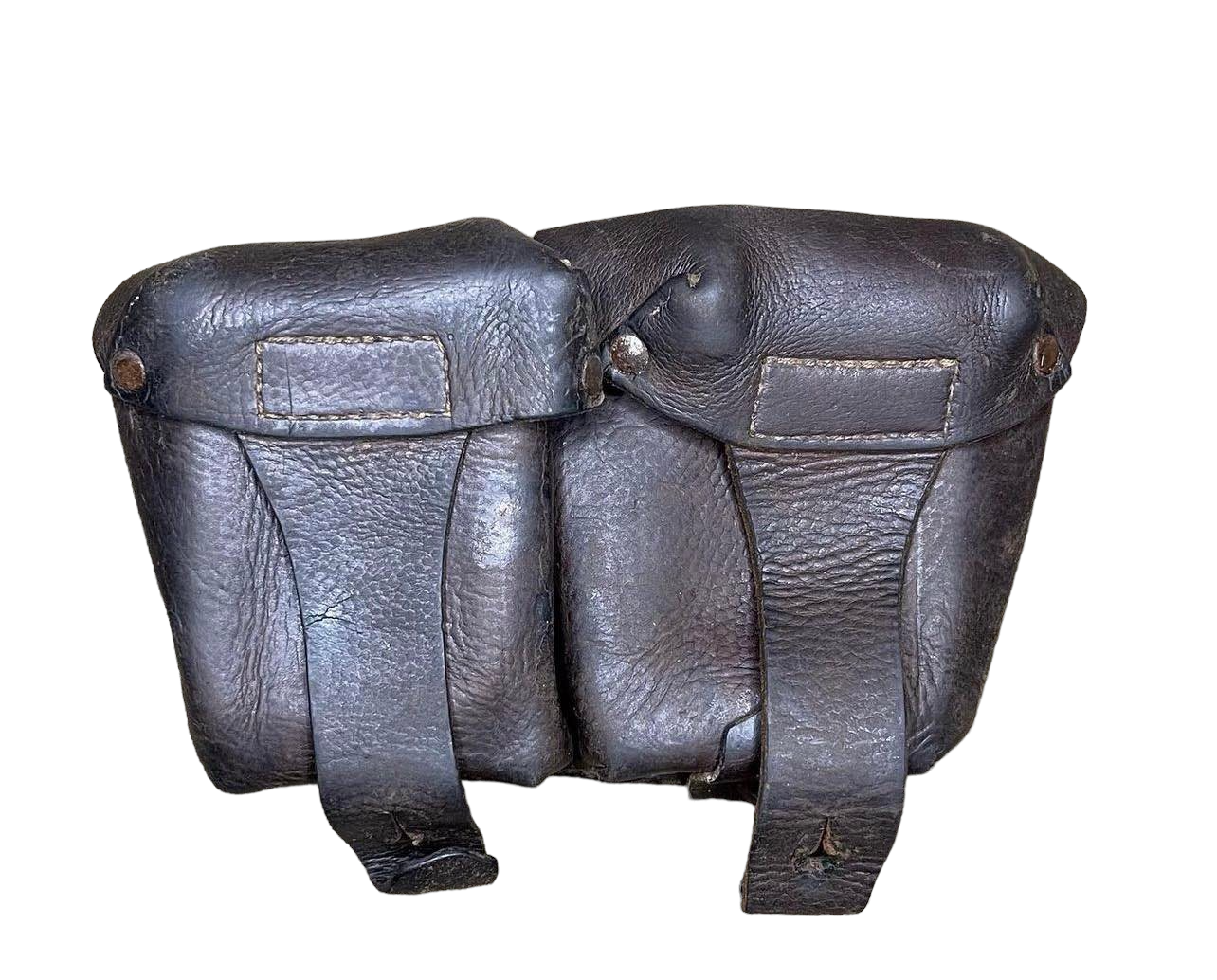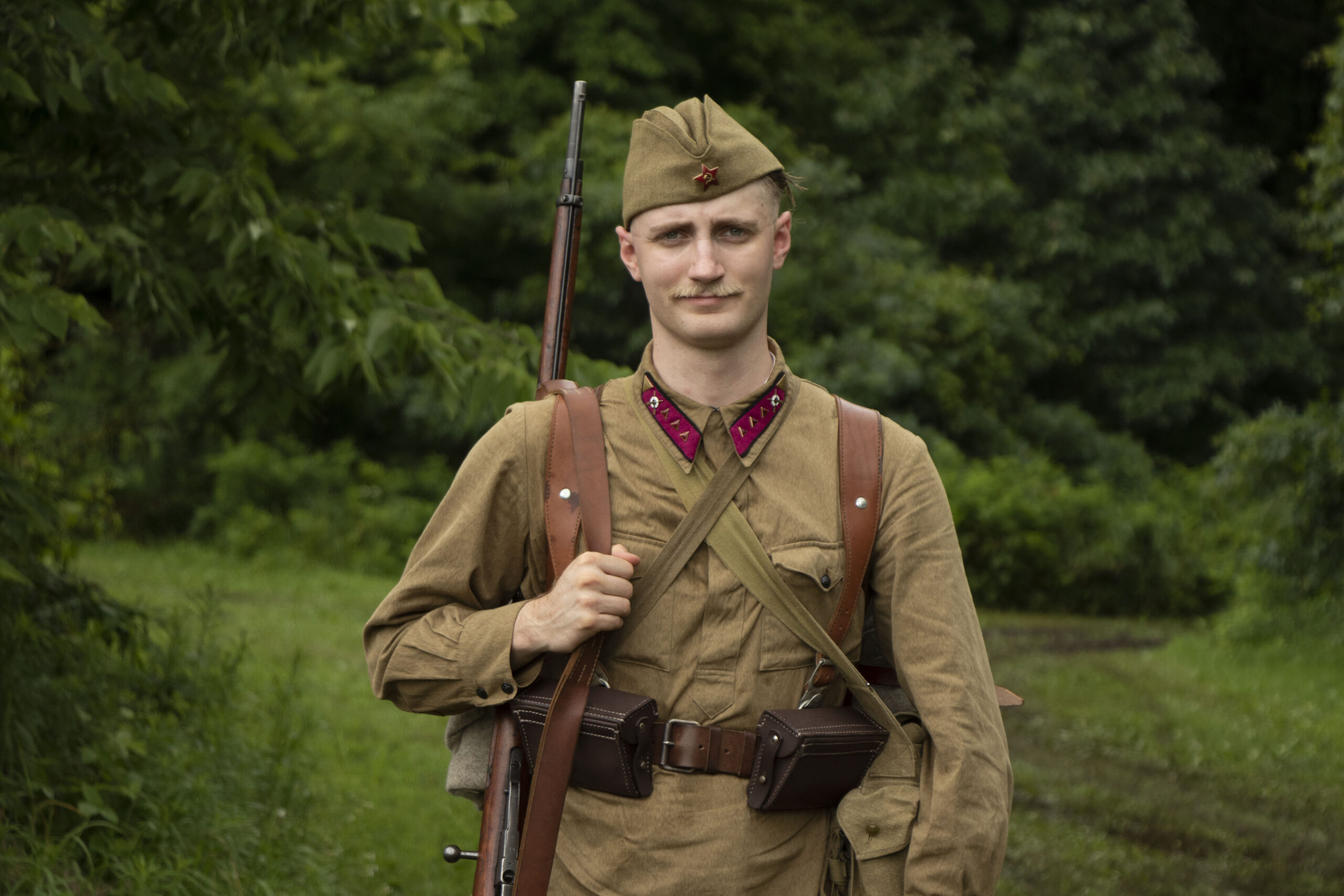Barbarossa
By Zac Williams
Summer 1941 Gear Guide
In 1941, the Worker’s and Peasant’s Red Army was in the midst of a buildup. Fueled by tensions in Europe and an active conflict in the Soviet Far East, in 1939, conscription, previously mandated of all 20 year old men, was lowered to call up 18 year olds. Between this new conscription law, passed in September 1939, and June 1941, the Red Army more than trebled in size, from 1.5 million men to 5 million. This created an immense burden on the Soviet people and government, as these millions of new conscripts had to be housed, fed, clothed, and of course, trained. Despite initial concerns, it appears that these issues were largely met, and the Red Army man of 1941 was a personally well equipped soldier. Defense spending accounted for 25. 6% of Soviet state spending, and millions of rifles, machine guns, and shineli were rolling into the quartermaster’s depots.
This focus on production, especially after the eye-opening victory over Finland in spring 1940, resulted in a Red Army soldier that was fairly uniformly equipped, with minimal variance we’d see later. There was already movement towards economizing and standardizing gear, and this movement, partially begun in 1939 and still progressing in June 1941, saw soldiers with a small mix of gear. We will detail them below
The Red Army in 1941 was governed by clothing regulations established by the People’s Commissar of Defence, in his order No.5 of 1 February 1941. These would not be substantially modified until 1943.
Clothing and Insignia
Model 1929, 31A and 31B Gymnastyorka
These older tunics were still in use in 1941, as although they were supplanted by the Model 1935, their use was not officially canceled until 1943. The three models differ in details of their buttons, collar closure, and cuffs, but all feature a stand and fall collar, two chest pockets, and tricot cotton or wool construction. Voin makes all three.
Model 1935 Pilotka
A sidecap made from double twill cotton, same as the breeches. This would have been the issued headgear in the summertime. The cap had a 24 or 34mm enameled red star on the front. The Other Hat Guy and Leningrad Hat Maker both make excellent pilotkas.
Underclothes
White cotton undershirts with either a rounded collar or a buttoned “V” collar as well as long white underpants were standard issue. Each soldier carried two sets. Winter weight underclothes were a heavier weight of cotton. Voin makes all variations of the shirt and pants, and Cold War sets are still available. They are largely identical.
Greatcoat
A woolen, double breasted coat, closed by hooks and eyes. On the collar, you should have Model 1941 insignia, or no insignia at all. Models appropriate for 1942 include the Model 1932, 1938, and 1941. Color should range from greyish white to steel gray to light brown. Try to avoid model 1969 “Brezhnev” coats. Voin and Schusters offer solid reproductions.
Model 1940 Insignia
This is a reenactor’s term for the two changes in RKKA insignia that took place in 1940, one in July and one in November, these rectangular patches were located on the collar and were coloured to represent your branch. Rank was shown with enameled red triangles for NCOs, and squares, rectangles, and diamonds for officers. Diamond shaped patches were worn on the overcoat, in the same branch color. Voin, Schuster, and Red Guard Militaria (RGM) offer excellent tabs, while Voin and St. Petersburg artisans make the rank devices.
Equipment
Model 1937 Rifle Pouches
Two leather pouches for Mosin or SVT ammo were usually carried at this point in the war. The Model 1937 pouch had many variations of its closure strap, but the basic design of a two celled box with a ring on the back remained constant. Do not use Kirza ammo pouches. RGM is the premier maker of reproductions, but for a cheaper option early East German examples can be used if properly darkened. RGM, Voin, and Schusters all make a variety of rifle pouches.
Canteen and Carrier
The Model 1932 canteen, with a screwtop was standard by this time. East German reparations canteens are the closest non original item. Postwar canteens are acceptable if one has removed the paint, but try to avoid them if possible. It should be contained in a Model 1941 carrier, a cotton bag with a closure that goes over the top of the bottle, or a Model 1937 carrier, which hangs from a D ring off the belt. Leningrad Restoration Workshop restores and sells original Soviet canteens.
Backpacks - Model 1936
A German style tornister square framed bag, with loops around it for the attachment of a mess kit and a greatcoat. Fantastically stylish yet impractical, these packs were on the way out in 1941. They are still seen rarely into 1942, however. Voin and Ivan Alekseev repro them. This should be your 3rd choice for a backpack in 1941
Backpacks - Model 1939/41 and Produce Bag
A search for a cheaper bag for the ever expanding Red Army settled in 1939 on a small rucksack, with a large, divided inner cavity and two small pockets on the outside. The bag had leather loops for attaching gear, and was edged in leather. In 1941, the bag was simplified, dropping all leather from its construction. In response to complaints about its small size, a produce bag was introduced that same year to carry a soldier’s mess equipment and food on his belt rather than in the rucksack. The 1939 was common, the 1941 and produce bag was not. The 39 should be your second choice, the 41, the last choice. Schuster and Voin make Model 1941 bags, RGM makes the best 1939 pack.
Backpacks - Veshmeshok
A simple “pillow case with a strap”, the veshmeshok was a bag that entered Tsarist service in 1869, and continued in Soviet service until the 1980s. WWII models were the Model 1930 and 1941, which was slightly shorter to save on material. Both are acceptable for 1941 use, and should be your first choice for a bag. RGM, Voin, and Schuster make excellent repros.
Helmets
SSH-36
Introduced in 1936, this model of helmet is iconic for it’s prewar use and blend of design influences. For 1941, the helm can have a star on the front or be left blank. Originals are out there, but IMA and W0rld War Supply make reproductions, with the WWS model being higher quality but only made in a smaller size (55-58cm head, although you can modify the liner to fit a 59). This should be your first choice for a 1941 impression.
SSH-39
In 1939, a new helmet was introduced to RKKA soldiers. Its domed shape would become the basis for most future Soviet helmets. These helmets had the same liner as the SSH36, which led to issues of winter use. Originals are very pricey, and no reproductions are made. Be weary of Czech Vz53 helmets modified to resemble the SSH-39, they are not correct, do NOT buy a modified Vz53. The SSH-39 should be your second choice for a 1941 impressions
SSH-40
A further modification of the SSh-39, with the intention of improving the helmet for winter use. A new three pad liner allows the wearing of winter headgear (balaclavas, ushanki) under the helmet without some comfort. These helmets were just entering production in early 1941, and were relatively rare by June. Thus, this should be your last choice for a 1941 impression. Originals and examples made postwar are common, and can be had cheaply. They were made in three sizes, with Size 1 being for 54-57 heads, Size 2 for 58-60, and Size 3 for 61+.
Footwear
Jackboots
All leather boot, with a shaft rising up to above the calf. The soles should be leather as well, with no hobnails, but toe and heel irons have been noticed. The shape of the shaft should be more stovepipe-like, rather than the oblong German style shafts. This is a hard piece of gear to get, as postwar examples that are correct have largely dried up, especially in bigger sizes. There was reproductions made, but they seem to have been all sold and are only encountered on the secondary market.
Low Boots and Puttees
In a economizing measure, low boots and puttees were reintroduced to the Red Army by 1938. These boots were very similar to German models, with 9 eyelet rows and a curved vamp. Soviet boots however were made from smooth side out leather, and had leather soles lacking hobnails, although toe and heel irons have been noticed. These were always worn with puttees, of black colour and woven wool construction. In 1941, we begin to see khaki and green puttees as well. As with jackboots, this is a hard piece of kit to get, with repros and postwar useable examples disappearing from the market. Voin and Schuster make the puttees in all colors, though.
Impression Photos
-click to expand each photo-






















